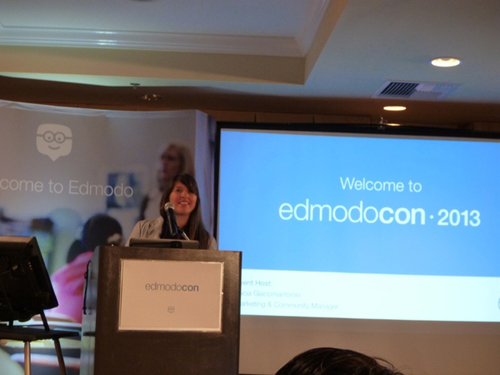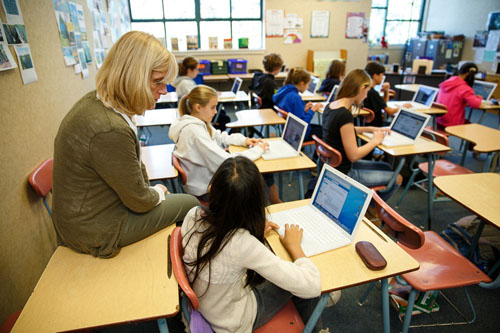According to OECD Education Indicators in Focus, “Higher Education financing systems that charge a moderate level of tuition fees — combined with student financial support systems that offer loans with income-contingent repayments and means-tested grants — may stand a better chance of promoting access, הון עצמי, completion, and positive outcomes for students.”
The problems faced in order to achieve this goal or something close to it include surging costs in higher education, an increasing number of students relying on loans to pay for schooling, an increasing number of students burdened with debt (1 ב 5 American households are burdened with student debt), and tightly constrained education budgets. Another question being raised by families is, “Will the enormous investment in time and money students being asked to make in higher education pay off?” The graduate unemployment rate in the U.S. now stands at a shocking 14 אחוזים, and according to a recent report by The Wall Street Journal היו 284,000 graduates with a bachelor’s degree or higher working minimum wage jobs last year (עד 70 percent from a decade ago). A recent McKinsey and Chegg report indicated that nearly half of college graduates polled regretted their decisions related to higher education. Difficult facts for anyone to swallow — somewhat tolerable when family can afford your education and support your ongoing living expenses indefinitely — grossly unfair to the majority of American families who can’t.
How does the cost of higher education in the United States compare to other countries? According to Global Higher Education Rankings (GHER) 2010, education costs in most countries range between 5 ו 20 percent of median income. Norway’s higher education system is the least expensive, with educational costs at just over 2.2 percent of median income level. דנמרק, שוודיה, גרמניה, France and Finland are all under 6 אחוזים. קנדה, ניו זילנד, הולנד, England and Wales, and Latvia are all under 25 אחוזים. By comparison, the United States is one of the most expensive markets, with education costs over 51 percent of median income. What about living costs? Surprisingly, the United States again is one of the most expensive markets in the survey, ranking third after Japan and Australia. [Data for the United States figures in the GHER research is based partly on data from the College Board’s annual Trends in College Pricing (for room and board) and partly from the International Comparative Higher Education Finance and Accessibility Project (for everything else).]
There are efforts underway to reduce higher education costs and improve graduation rates, but I believe the impact will be limited. Let’s not forget, we are starting at a very high level of education costs, i.e. 51 percent of median income. We need a game changer or a disruptive innovation that could make a significant difference in affordability and accessibility for students. I believe that will ultimately be an online higher education model. There are challenges to overcome. Online education is still at the beginning of the quality curve with a way to go, but it will get there. We also know that the real power of technology lies in its ability to meet each individual’s unique learning requirements. That alone is making new converts in the world of education every day. It does not have to be bricks versus clicks. Blended learning models continue to expand and improve at every level of education. We can significantly lower student costs with a blended system and we can serve a much larger population of students.
I believe this is the kind of solution that will allow us to remain competitive globally. אחרי הכל, once upon a time we went to bookstores. Now we go to the internet. Or we customize a blend of the two that works for each of us individually.
בגלובל החיפוש לחינוך, להצטרף אליי ולמנהיגי מחשבה מוכרת בעולם כולל סר מייקל ברבר (בריטניה), DR. מיכאל בלוק (ארה"ב), DR. ליאון בוטשטיין (ארה"ב), פרופסור קליי כריסטנסן (ארה"ב), DR. לינדה דרלינג-Hammond (ארה"ב), DR. Madhav אוון (הודו), פרופ 'מיכאל Fullan (קנדה), פרופ 'הווארד גרדנר (ארה"ב), פרופ 'אנדי הארגריבס (ארה"ב), פרופ 'איבון הלמן (הולנד), פרופ 'קריסטין Helstad (נורווגיה), ז'אן הנדריקסון (ארה"ב), פרופ 'רוז Hipkins (ניו זילנד), פרופ 'קורנליה הוגלנד (קנדה), הכבוד ג'ף ג'ונסון (קנדה), גברת. שנטל קאופמן (בלגיה), DR. Eija Kauppinen (פינלנד), מזכיר המדינה Tapio Kosunen (פינלנד), פרופ 'דומיניק לפונטיין (בלגיה), פרופ 'יו לאודר (בריטניה), פרופ 'בן לוין (קנדה), לורד קן מקדונלד (בריטניה), פרופ 'בארי McGaw (אוסטרליה), שיב נדאר (הודו), פרופ 'R. נטריגין (הודו), DR. PAK NG (סינגפור), DR. דניז אפיפיור (ארה"ב), שרידהר ךאג'גופלן (הודו), DR. דיאן ראוויטש (ארה"ב), ריצ'רד וילסון ריילי (ארה"ב), סר קן רובינסון (בריטניה), פרופ Pasi Sahlberg (פינלנד), אנדריאס שלייכר (PISA, OECD), DR. אנתוני סלדון (בריטניה), DR. דוד שפר (ארה"ב), DR. קירסטן Immersive Are (נורווגיה), קנצלר סטיבן ספאן (ארה"ב), איב Theze (Lycee Francais ארה"ב), פרופ 'צ'רלס Ungerleider (קנדה), פרופ 'טוני וגנר (ארה"ב), סר דייוויד ווטסון (בריטניה), פרופסור דילן Wiliam (בריטניה), DR. מארק Wormald (בריטניה), פרופ 'תיאו Wubbels (הולנד), פרופ 'מייקל יאנג (בריטניה), ופרופ 'Minxuan ג'אנג (סין) כפי שהם לחקור שאלות חינוך תמונה הגדולות שכל המדינות מתמודדות היום. גלובל החיפוש לחינוך עמוד קהילה
C. M. רובין הוא המחבר שתי סדרות מקוונות רבים קוראות שלהיא קיבלה 2011 הפרס אפטון סינקלר, “גלובל החיפוש לחינוך” ו “איך וויל אנחנו קראו?” היא גם מחברם של שלושה ספרים רבי מכר, כולל אליס האמיתית בארץ הפלאות.






תגובות אחרונות